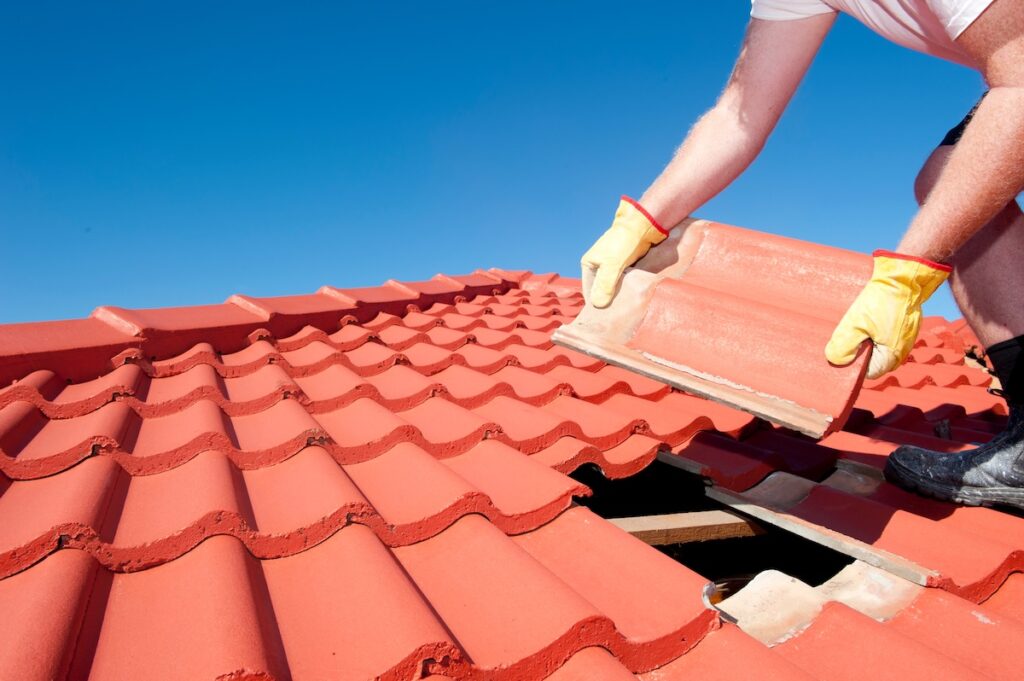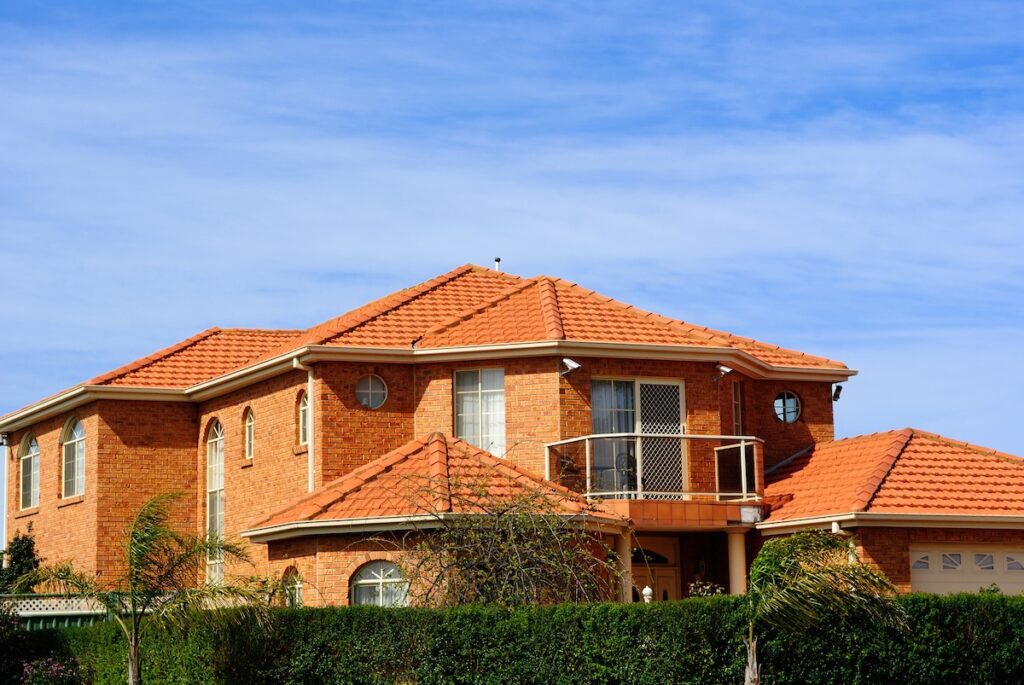Tile roof repair is a timeless solution for homeowners who value durability, aesthetic appeal, and long-term investment. However, like any roofing material, tile roofs are not immune to wear and tear. Whether you’re facing minor cracks, loose tiles, or underlying structural concerns, repairing your tile roof promptly is essential for protecting your home and extending its lifespan.
At Cathedral Roofing Innovations, we understand that your roof is more than just a structural necessity; it’s part of your home’s character and value. This post will walk you through some of the most common issues with tile roofs and how to address them while keeping your roof in peak condition.
Here’s what you’ll learn in this guide:
- The most frequent problems affecting tile roofs and what causes them.
- Practical steps and insights into extending the lifespan of your roof.
- Why specialized expertise is crucial for proper repair and maintenance.

🏠 Common Issues with Tile Roofs
Tile roofs are built to last, often outliving other roofing materials by decades. However, certain issues can arise due to weather, aging, or improper installation. Understanding these problems is the first step toward effective repairs.
Cracked or Broken Tiles
Individual roof tiles are susceptible to cracking or breaking, especially after significant impact or exposure to fluctuating weather conditions. Broken tiles not only diminish the aesthetic appeal of your roof but also leave your home vulnerable to water damage.
Causes of Cracked Tiles:
- Falling debris from nearby trees or storms.
- Foot traffic, especially during maintenance or inspections, without proper precautions.
- Freezing and thawing cycles can cause moisture to expand and contract within the tiles.
Addressing this issue promptly with professional repair or replacement will prevent further damage to the underlayment and structural integrity of your roof.
Water Leaks and Moisture Problems
Even with the durability of tile, water intrusion can occur, often as a result of damaged tiles or underlayment. Leaks are a serious concern as they can lead to mold, rot, and damage to interior structures.
Signs of Water Leaks:
- Water stains on ceilings or walls.
- Mold or mildew growth near the attic or roofline.
- Damp or musty odors lingering within your home.
Repairing leaks often involves replacing damaged tiles and ensuring the underlayment is secure and watertight.
Aging Underlayment
While tile itself can last 50 years or more, the underlayment beneath it typically has a shorter lifespan. Worn-out underlayment can lead to inefficient water drainage and increased vulnerability to leaks.
Indicators of Aging Underlayment:
- Persistent water leaks despite intact tiles.
- Signs of wear when tiles are removed for inspection.
- Accelerated damage during heavy rains or storms.
Replacing the underlayment, though labor-intensive, is a crucial step in maintaining your tile roof’s performance.
Loose or Dislodged Tiles
Strong winds, settling foundations, or improper initial installation can leave tiles loose or completely dislodged. These gaps can jeopardize your home’s protection against adverse weather and reduce the overall stability of your roof.
Efflorescence (White Residue)
Efflorescence is salt residue that often appears as a chalky white film on tiles. Though it may be primarily a cosmetic issue, it can sometimes indicate underlying moisture problems within the tile or roofing system.
By identifying these common issues early, you can avoid costly repairs and protect the long-term value of your home.
🛠️ How to Fix Tile Roof Problems
Addressing tile roof repairs requires a careful approach to avoid causing further damage to the roof. While minor fixes may seem simple, contacting a professional is often the best choice for accurate repair and long-lasting results.

Replacing Cracked or Broken Tiles
When tiles are cracked, replacement is the most effective solution. Here’s how this process generally works:
- Locate the Broken Tile: Carefully inspect the roof and mark the damaged area.
- Remove the Tile: Use proper tools to lift adjacent tiles without causing further breakage.
- Secure the Replacement Tile: Fit the new tile securely in place and ensure it aligns with the surrounding tiles.
While this process may sound straightforward, it requires an experienced touch to avoid compromising nearby tiles or disrupting the integrity of the underlayment.
Repairing Leaks
To address leaks effectively, professionals will first identify the root cause. This process involves:
- Removing tiles around the affected area.
- Replacing or mending damaged underlayment.
- Reinstalling tiles and ensuring the seal is waterproof.
Fixing leaks early prevents water damage from escalating and compromising additional sections of your roof.
Reinforcing the Underlayment
If your underlayment has reached the end of its lifespan, replacement is necessary. This involves removing the tiles, replacing the underlayment material, and reinstalling the tiles securely. It’s a labor-intensive process, but one that ensures your roof continues to perform as intended.
Cleaning Efflorescence
Efflorescence can be cleaned using water and a brush. However, you need to ensure the cleaning process doesn’t damage the tiles or remove protective coatings. Professional cleaning services can ensure a thorough, safe, and effective job.
✅ Steps to Extend the Life of Your Tile Roof
Keeping your tile roof in optimal condition is about more than just repair; regular maintenance and preventive measures go a long way in protecting its lifespan. Follow these steps to ensure your roof stays strong for years to come.

- Schedule Regular Inspections: Routine inspections by professionals allow you to catch minor issues before they become significant problems. Aim for at least one comprehensive inspection annually.
- Clear Debris Regularly: Leaves, branches, and other debris can accumulate on your roof, trapping moisture and putting unnecessary weight on the tiles. Gently brushing or clearing these materials can prevent damage over time.
- Trim Overhanging Branches: Nearby trees may drop debris or scrape tiles during storms. Regular pruning keeps branches at a safe distance.
- Maintain Gutter Systems: Your gutter system plays a crucial role in diverting water away from your roof. Ensure your gutters are clean and functioning properly to avoid water pooling or damage to the roof edges.
- Use Proper Roofing Footwear: Walking on tiles can cause cracks or dislodgement if improper footwear is used. Soft-soled boots distribute weight evenly and minimize damage during maintenance activities.
- Avoid DIY Repairs: While the temptation to handle repairs independently is understandable, complex tile roof repairs require expertise and specialized tools to ensure long-term results and safety.
Trust Cathedral Roofing Innovations for Your Tile Roof Repairs
Your roof is more than just an essential structure; it’s a pivotal part of your home’s identity and value. Tile roofs, with their durability and aesthetic appeal, deserve specialized care to maintain their character and performance for decades.
At Cathedral Roofing Innovations, we specialize in repairing and maintaining tile roofs for discerning homeowners. Our team of experienced professionals understands the unique requirements of tile roofing systems, from expertly managing replacements to addressing underlayment concerns. With meticulous attention to detail and a commitment to quality, we’ve earned the trust of homeowners seeking exceptional service. If you’re ready to address your roof’s problems or enhance its longevity, we’re here to help. Contact Cathedral Roofing Innovations today and experience the unmatched care your roof deserves!
